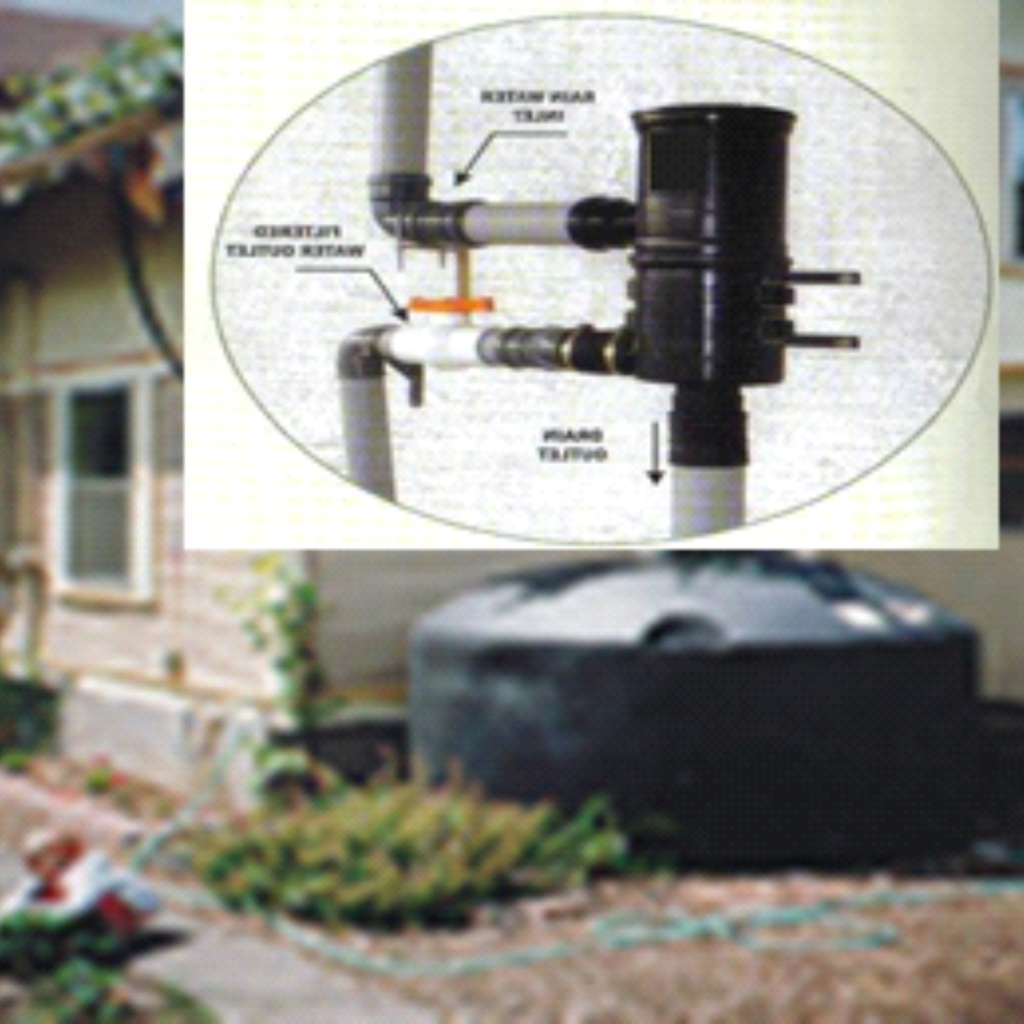Rooftop Rainwater Harvesting
Water scarcity is one of the most pressing challenges of the 21st century. As urbanization expands and natural water resources deplete, sustainable practices like Rooftop Rainwater Harvesting (RRWH) are becoming essential. This eco-friendly method leverages rooftops as collection surfaces to conserve rainwater, ensuring a reliable water supply while reducing dependence on conventional sources.
Rainwater harvesting systems can be specifically designed to support groundwater recharge. These systems capture rainwater from rooftops, roads, or other surfaces and direct it to recharge pits or wells for infiltration into the ground.
What is Rooftop Rainwater Harvesting?
Rooftop Rainwater Harvesting is the process of collecting and storing rainwater from rooftops for later use. It involves a systematic setup that channels rainwater through gutters, filters it to remove impurities, and stores it in a tank or directs it to recharge pits for groundwater replenishment.
This technique is simple, cost-effective, and adaptable for residential, commercial, and industrial buildings.
How Does Rooftop Rainwater Harvesting Work?
💧 Collection
Rainwater is captured from rooftops using gutters or pipes. The design of the roof should allow easy flow of water towards the collection points.
💧 Filtration
Collected water passes through filters to remove leaves, dirt, and other debris. Filters such as mesh screens, sand filters, or gravel filters are commonly used.
💧 Storage and Recharge
Filtered water is stored in tanks, reservoirs, or cisterns for immediate use. Tanks are made from materials like plastic, concrete, or steel. Excess water is directed to recharge pits to replenish groundwater levels.
Benefits of Rooftop Rainwater Harvesting
Rooftop rainwater harvesting offers a multitude of environmental, economic, and social benefits:
Water
Conservation
Helps reduce the pressure on traditional water sources, ensuring sustainability.
Cost
Savings
Minimizes water bills by providing an alternative source for everyday needs.
Groundwater Recharge
Replenishes groundwater tables, preventing depletion and ensuring availability for future generations.
Flood
Mitigation
Prevents waterlogging and urban flooding by managing runoff effectively.
Eco-Friendly Solution
Promotes environmental sustainability by reducing reliance on freshwater resources.
Increased Self-Sufficiency
Provides a dependable water source during droughts or water supply disruptions.
Sustainability
Groundwater recharge ensures sustainable water use for present & future generations.
Climate Resilience
Recharge systems aid water supply amid climate-driven rainfall changes and droughts.
Improved Quality
Recharge systems filter contaminants, providing cleaner water through natural percolation.
Components of a Rooftop Rainwater Harvesting System
A typical RRWH system includes the following components:
Catchment Area: The roof, which acts as the primary surface for rainwater collection.
Gutters and Downpipes: Channels that direct water from the roof to the storage system.
Filters: Devices to remove impurities from the collected water.
Pit: Containers for holding water, allowing to retain water during heavy runoff and recharge to the groud.
Overflow Mechanism: Ensures excess water is safely diverted out of the premises.
Types of Rooftop Rainwater Harvesting Systems
Rooftop rainwater harvesting can be categorized into two main types:
Storage for Direct Use: In this system, rainwater is stored in tanks or reservoirs for immediate use in applications like gardening, washing, or irrigation.
Recharge Systems: Here, collected water is directed to recharge pits or wells to enhance groundwater levels. This is particularly beneficial in areas with declining aquifers.
Why Choose NIPSTec for Rooftop Rainwater Harvesting Systems?
At NIPSTec, we specialize in designing and implementing efficient rooftop rainwater harvesting solutions tailored to your needs. Here’s why you should choose us:
💧Portfolio: A portfolio of over 1000+ successful projects across industries, warehouses, corporates, hotels, hospitals, institutions, and residential communities.
💧Expertise: Over 24 years of experience in water conservation.
💧Custom Solutions: Systems tailored to residential, commercial, and industrial applications.
💧High-Quality Materials: Durable, eco-friendly components.
💧Pan-India Service: Trusted provider in Delhi, NCR and across India.
💧Sustainability Focus: Helping clients achieve water security and environmental goals.
If you’re ready to take a step toward water sustainability, contact NIPSTec today for expert guidance and customized solutions.
Let’s work together to build a water-secure future!
Filteration System
💧Self-Cleaning: Requires minimal maintenance.
💧Simple Installation: Quick and hassle-free setup.
💧No Power Needed: Operates through cohesive force.
💧Durable Design: No consumables required.
💧Compact Build: Fully enclosed and suitable for wall mounting.
💧Continuous Debris Removal: Filters out dirt, leaves, and particles effectively.
💧Consistent Capacity: Performs efficiently even with varying rainfall intensities.
This provides a practical way to utilize rainwater sustainably.


Vee-Wire Filter Screens
Vee-Wire Filter Screens are cylindrical structures crafted from V-shaped wires spirally wrapped on longitudinal rods. The intersecting wires and rods are resistance-welded, ensuring robust durability. Features include:
💧Efficient Performance: Non-clogging design.
💧Anti-Corrosive Material: Ensures longevity.
💧Easy Installation: User-friendly setup.
💧Recharge Efficiency: V-shaped slots enable jetting effects to inject water into aquifers.
💧High Open Area: Continuous slots maximize water flow.
These features make Vee-Wire Filter Screens a reliable and efficient choice for rainwater filtration.

FRP Filters – Rainwater Harvesting
FRP Filters are constructed from fiberglass-reinforced plastic, known for its strength and flexibility. This material ensures resistance to insects and environmental wear. Key benefits include:
💧Durable Build: Long-lasting when properly maintained.
💧Low Maintenance: Requires only routine cleaning of the stainless-steel bucket.
💧Enhanced Compatibility: Ideal for various rainwater harvesting systems.
💧Lightweight Design: Easy to handle and install.
With proper care, FRP Filters offer an efficient and cost-effective solution for rainwater harvesting.

Our Clients









